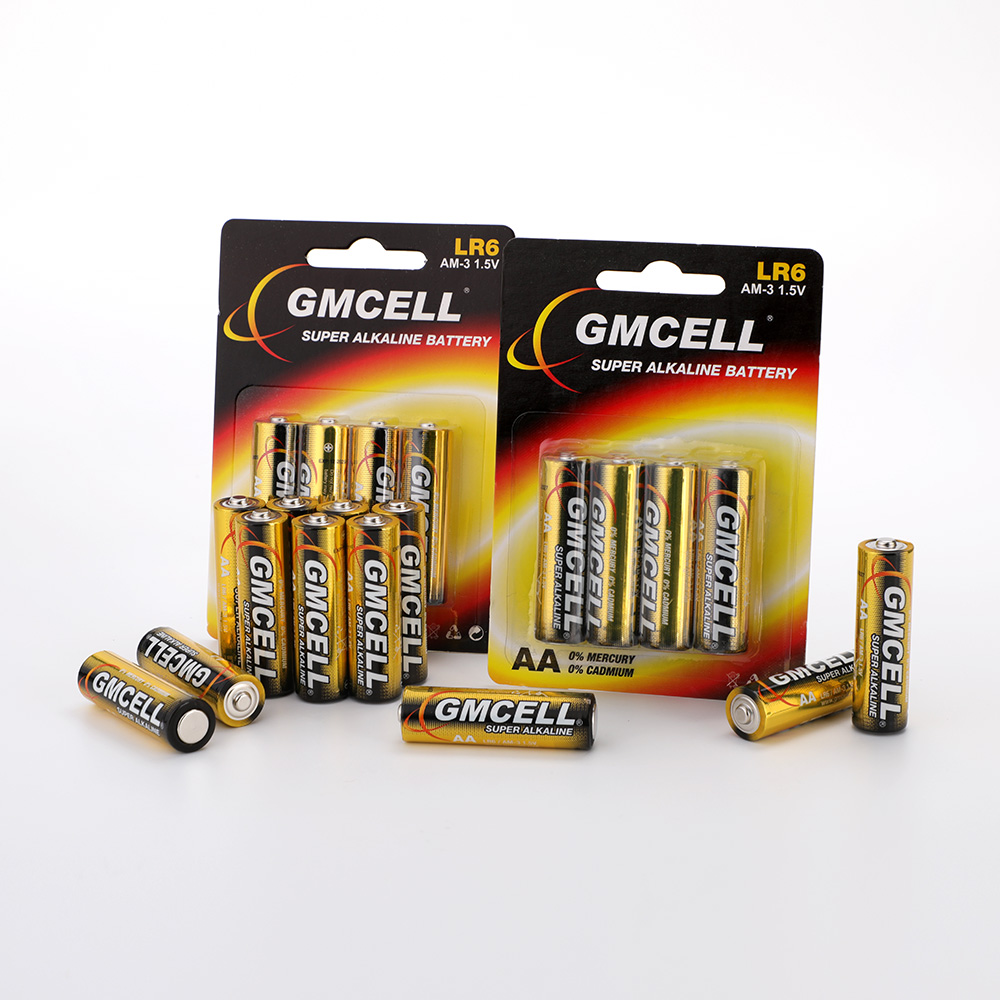In the field of energy storage, alkaline batteries hold a significant position due to their unique technical characteristics. They boast remarkable advantages, providing reliable power support for numerous devices. However, they also have certain limitations. Below, we will conduct an in – depth technical analysis of the advantages and disadvantages of alkaline batteries.
I. Advantages of Alkaline Batteries
1. High Energy Density for Long – lasting Performance
Alkaline batteries utilize a potassium hydroxide electrolyte and a zinc – manganese dioxide electrode system, offering an outstanding energy density of up to 800 – 1000Wh/L. Compared with traditional carbon – zinc batteries, their energy density is increased by five times, enabling them to provide long – term and stable power supply for high – power – consuming devices such as game controllers and digital cameras. For instance, during continuous use, an alkaline battery can power a game controller three to five times longer than a carbon – zinc battery, meeting users’ long – duration entertainment needs.
2. Stable Voltage Output for Reliable Performance
During the discharge process, alkaline batteries can maintain a constant voltage output of 1.5V, effectively preventing performance instability caused by sudden voltage drops in devices. Whether it is a low – power smart door lock or a high – power electric toy, alkaline batteries can provide stable power, ensuring smooth operation of the devices. Take the smart door lock as an example; the stable voltage of the alkaline battery can ensure that the door lock unlocks normally throughout the battery’s lifespan, reducing the risk of malfunctions due to voltage fluctuations.
3. Strong Adaptability to a Wide Temperature Range
Through the electrolyte freezing point regulation technology, alkaline batteries can operate normally in a wide temperature range from – 20℃ to 60℃. In cold outdoor environments, alkaline batteries can release 85% of their rated capacity, ensuring the normal operation of outdoor devices such as weather station sensors. In high – temperature industrial environments, they can also maintain structural stability and continuously power industrial instruments, making them suitable for a wide range of applications.
4. Long Shelf Life for Instant Readiness
Alkaline batteries have an extremely low self – discharge rate, less than 1% per year, resulting in a shelf life of up to 10 years. Even after long – term storage, they can still retain sufficient power, making them suitable for emergency devices, backup power supplies, and other scenarios. For example, an alkaline battery installed in a home emergency light can still provide illumination in case of an emergency, even after several years of non – use.
5. Environmentally Friendly and Safe for Peace of Mind
Modern alkaline batteries adopt mercury – free production processes, meeting the EU RoHS certification standards. They can be disposed of directly with household waste, reducing environmental pollution. Meanwhile, the advanced anti – leakage design, such as the triple – seal structure (polypropylene sealing ring + metal edge – sealing + epoxy resin coating), significantly reduces the risk of leakage. After 1000 – hour anti – leakage testing, the leakage rate is less than 0.01%, effectively protecting the safety of electronic devices.
II. Disadvantages of Alkaline Batteries
1. Non – rechargeable, Higher Cost of Use
Alkaline batteries are primary batteries and cannot be recharged for repeated use. For devices with high – frequency power consumption, such as electric shavers and wireless keyboards, frequent battery replacement will increase the cost of use. Compared with rechargeable batteries, the long – term cost of using alkaline batteries is significantly higher.
2. Energy Density Still Lower than Some Secondary Batteries
Although the energy density of alkaline batteries is higher than that of carbon – zinc batteries, it is still lower than that of secondary batteries such as lithium – ion batteries. In application scenarios requiring large capacity and long – range, such as electric vehicles and large – scale energy storage devices, alkaline batteries cannot meet the requirements, limiting their application in these fields.
3. Limitations in Low – temperature Performance
Although alkaline batteries have certain low – temperature adaptability, in extremely low – temperature environments (below – 20℃), the chemical reaction rate inside the battery slows down significantly, resulting in a substantial decrease in capacity and inability to provide sufficient power for devices. For example, the performance of alkaline batteries in outdoor cameras used in extremely cold regions will be severely affected.
4. Volume and Weight Constraints
To achieve higher energy storage, alkaline batteries usually need to increase the amount of electrode materials and electrolytes, resulting in relatively larger volume and weight. For small electronic devices that pursue thinness and lightness, such as smartwatches and Bluetooth earphones, the volume and weight of alkaline batteries may be a factor hindering their application.
Alkaline batteries, with their advantages such as high energy density, stable voltage output, and wide – temperature – range adaptability, play an important role in numerous fields, providing reliable power support for various devices. However, their disadvantages, such as non – rechargeability and relatively lower energy density, also limit their application in certain specific scenarios. With the continuous development of technology, it is expected that the performance of alkaline batteries will be further optimized, expanding their application boundaries in the future.
Post time: Jun-03-2025





